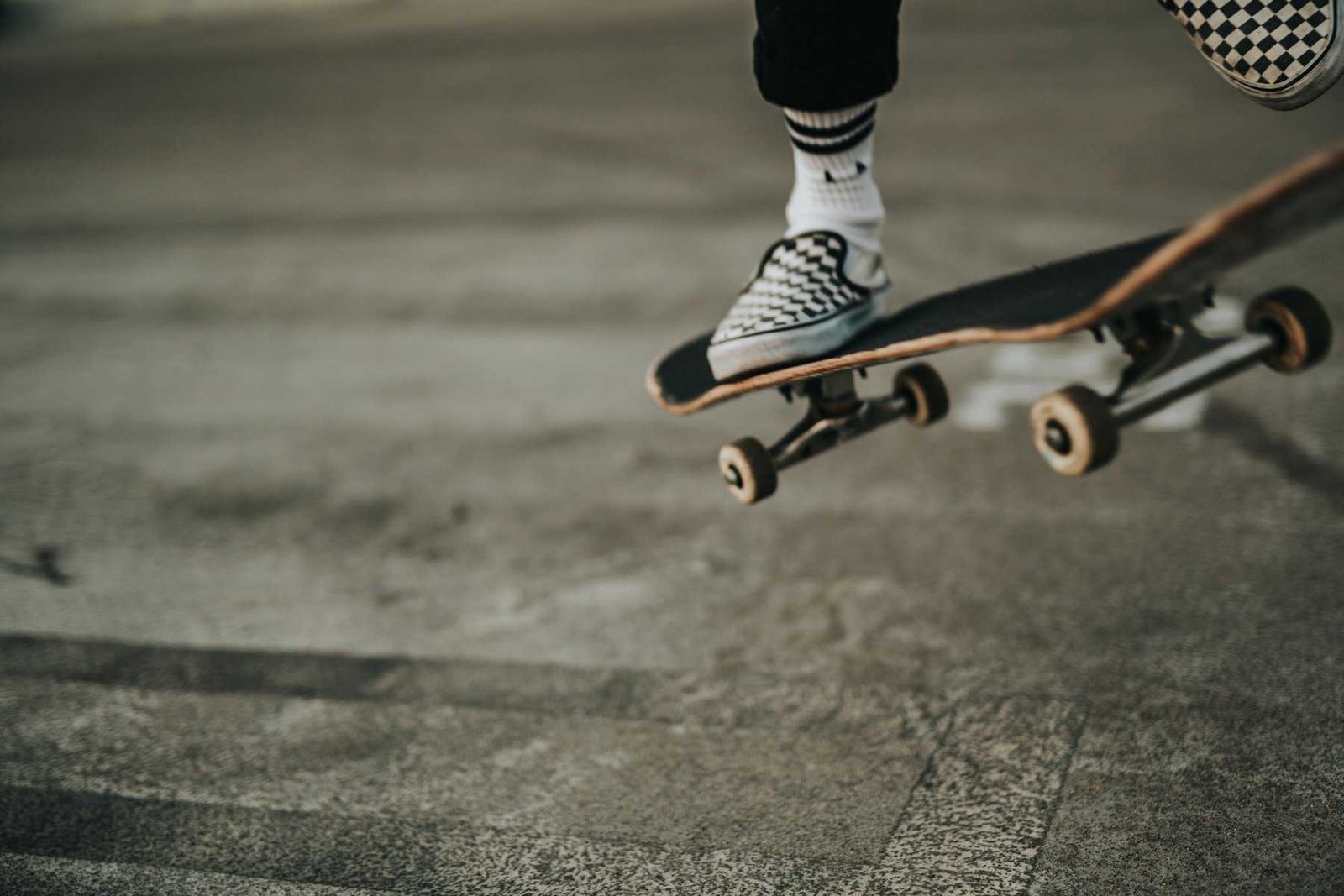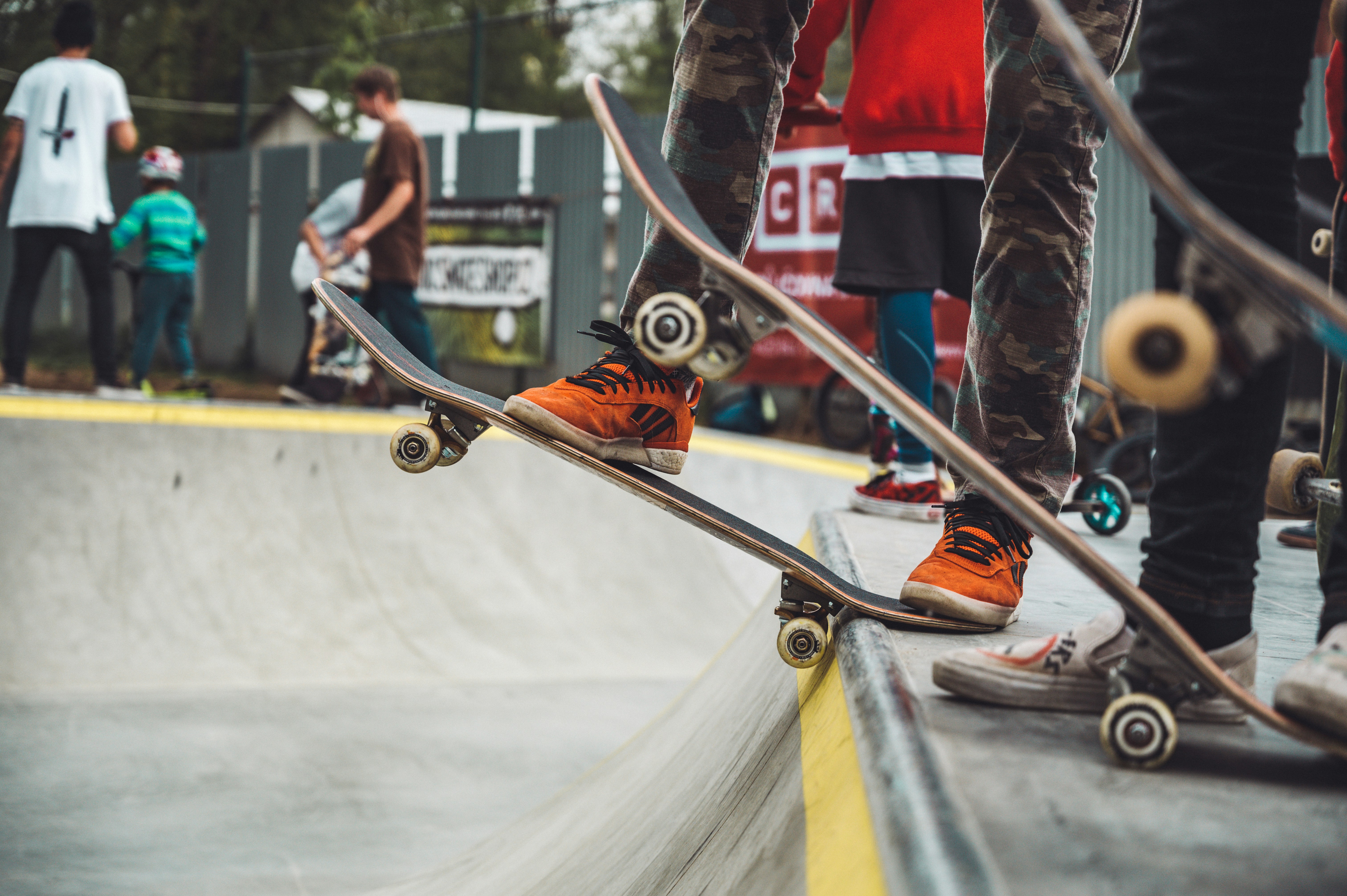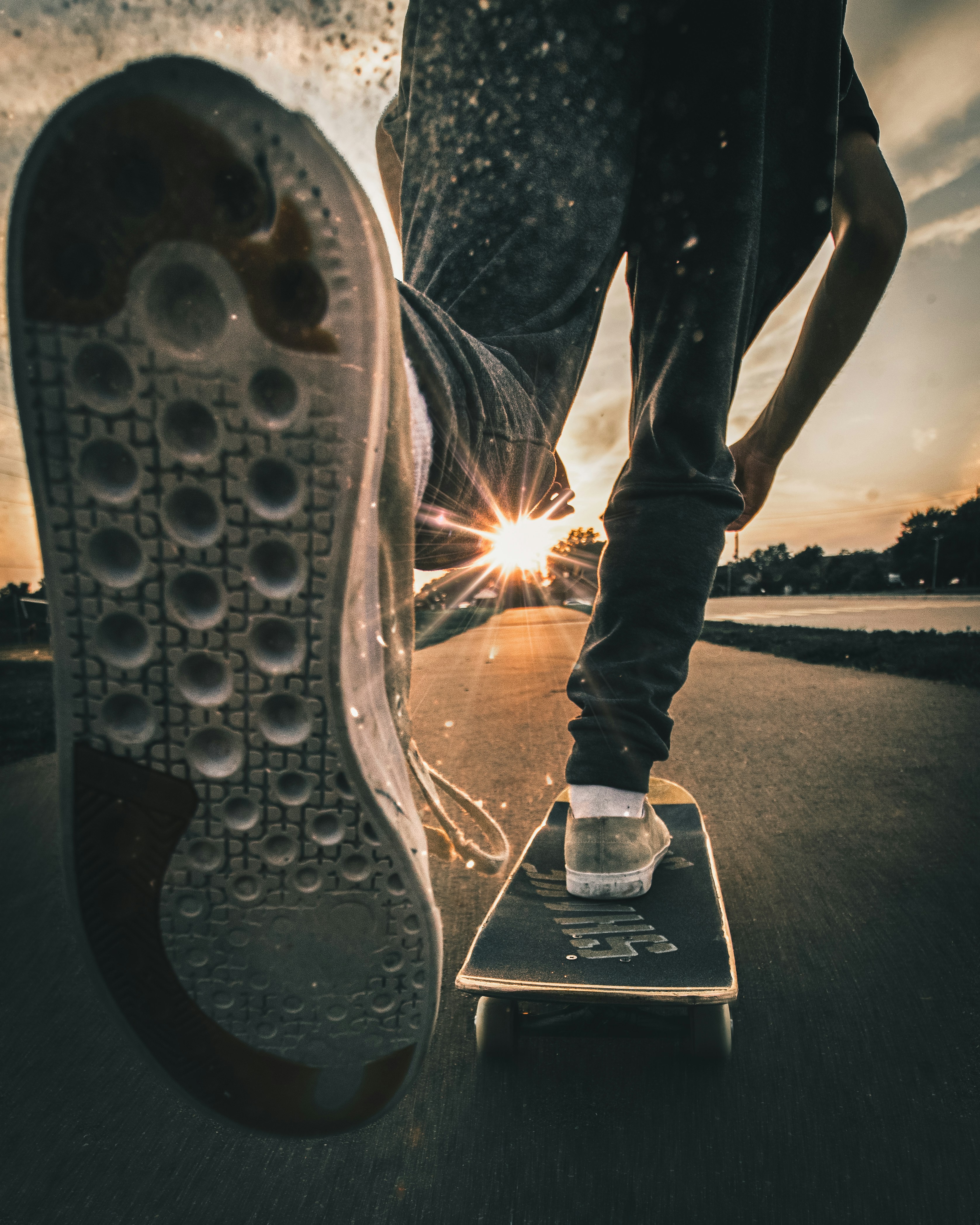If you’re looking to enhance your skills on a skateboard and take your pump and speed control to the next level, there are a few key factors you should focus on. Understanding how to properly position your body, mastering the art of weight transfer, and finding the optimal stance are all essential elements in improving your skateboard pump and speed control. By honing in on these key aspects, you’ll not only enhance your performance, but also gain a greater sense of confidence and control while riding.
Choosing the Right Skateboard
Finding the right skateboard is essential for a comfortable and enjoyable skateboarding experience. There are a few key factors to consider when choosing a skateboard, and these include board size and truck width and tightness. By carefully considering these factors, you can ensure that your skateboard is perfectly suited to your individual needs and preferences.
Board Size
Board size plays a crucial role in determining your overall skateboarding experience. It is important to choose a skateboard that is the right size for your height, weight, and skating style. If the board is too small, you may have difficulty maintaining balance, whereas a board that is too large can hinder your ability to maneuver and perform tricks effectively.
To determine the right board size, consider your own body proportions. A general rule of thumb is that the width of the skateboard deck should be roughly equal to the width of your shoe size. However, this can vary depending on personal preference, so it’s worth experimenting with different sizes to find what feels most comfortable for you.
Truck Width and Tightness
The width and tightness of your skateboard trucks also play a significant role in your skating experience. Trucks are the metal T-shaped components that attach the wheels to the deck. The width of the trucks should match the width of your skateboard deck for optimal stability and control.
When it comes to tightness, it refers to how loose or tight the kingpin bolt is on your truck. Looser trucks allow for easier turning and maneuverability, while tighter trucks provide greater stability at high speeds. Finding the right balance between maneuverability and stability is important and can be achieved by adjusting the tightness of your trucks.
Foot Placement and Stance
Proper foot placement and stance are crucial for maintaining balance and control while skateboarding. By positioning your front and back foot correctly and ensuring proper body alignment, you can improve your overall skateboarding performance.
Positioning of Front and Back Foot
The positioning of your front and back foot will depend on whether you ride regular or goofy. If you ride regular, your left foot will be your front foot, while if you ride goofy, your right foot will be your front foot. Position your front foot on or just behind the front bolts and angle it slightly towards the nose of the skateboard. Your back foot should be placed on or just behind the rear bolts, parallel to the deck.
Experiment with different foot positions to find one that feels most comfortable for you. Adjusting the placement of your feet can greatly impact your ability to control the skateboard and perform tricks.
Proper Body Alignment
Maintaining proper body alignment is essential for achieving balance and control on your skateboard. Keep your shoulders parallel to the skateboard deck and your knees slightly bent. This will help absorb shocks and allow for better maneuverability. Keeping your weight centered over the skateboard will ensure stability and prevent unnecessary falls.
Mastering the Pumping Technique
Pumping is a fundamental technique in skateboarding, especially when it comes to generating speed and maintaining momentum without pushing. Learning to master the pumping technique can greatly enhance your skateboarding experience.
Generating Momentum
To generate momentum, start by pushing your body weight back and forth using your legs. This shifting of weight transfers energy from your body to the skateboard, propelling it forward. The key is to generate enough force with each pump to maintain or increase your speed.
Weight Distribution
Proper weight distribution is essential for effective pumping. As you shift your weight from one foot to the other, make sure to distribute your weight evenly across both feet. This will help maintain balance and control while pumping. Avoid putting too much weight on your front or back foot to prevent the skateboard from becoming unbalanced.
Pumping Timing
Timing is crucial when it comes to pumping. The timing of your body movements and weight shifts should be synchronized with the natural momentum of the skateboard. As you transition from each pump stroke, pay attention to the rhythm and timing that allows for maximum efficiency and speed.
Building Leg Strength and Endurance
Skateboarding requires significant leg strength and endurance, as you rely on your legs to control the board and generate power. By incorporating leg exercises and cardiovascular training into your routine, you can improve your overall skateboarding performance.
Leg Exercises
Engaging in leg exercises will help strengthen the muscles used in skateboarding. Squats, lunges, and calf raises are excellent exercises for building leg strength. Additionally, incorporating balance exercises, such as standing on one leg or using a balance board, can enhance stability.
Cardiovascular Training
Skateboarding can be a physically demanding activity that requires cardiovascular endurance. Incorporating cardiovascular training, such as running or cycling, into your routine can improve your stamina and overall skateboarding performance. Aim for at least 30 minutes of cardio exercise three to four times a week to build endurance.

Maintaining Proper Balance
Maintaining proper balance is essential for navigating skateboard ramps, bowls, and various terrains. By mastering weight shifting and enhancing upper body stability, you can greatly improve your balance and control while skateboarding.
Weight Shifting
Effective weight shifting involves transferring your weight from one side of the skateboard to the other. This technique is crucial for turning and maneuvering the skateboard. As you approach a turn, shift your weight slightly towards the direction you want to go. This will help initiate the turn and maintain balance throughout.
Upper Body Stability
Maintaining upper body stability is essential for overall balance. Keep your core engaged and your upper body relaxed but stable. Avoid unnecessary movement and focus on maintaining a strong and stable posture. This will help you stay balanced and in control while skateboarding.
Controlling Speed through Carving
Carving is a technique that allows you to control your speed and change directions smoothly. By mastering various carving techniques and adjusting your body positioning, you can effectively control your skateboard’s speed.
Carving Techniques
There are different carving techniques you can utilize to control your speed. The most common one is the basic heel-to-toe carve, where you shift your weight from your heels to your toes as you make turns. This engages the edges of the skateboard, allowing for increased control and smoother transitions. Another technique is the slalom carve, where you make a series of quick, short turns to slow down or change direction rapidly.
Body Positioning
Your body positioning greatly influences your ability to control speed while carving. As you make turns, lean your body in the direction of the turn and extend your arms for balance. Lowering your center of gravity and keeping your body weight centered over the skateboard enhances stability and control. Experiment with different body positions to find what works best for you.
Learning to Brake and Slow Down
Being able to brake and slow down effectively is essential for maintaining safety and control while skateboarding. By mastering the foot drag technique and using tails and slides, you can confidently control your speed and come to a stop when needed.
Foot Drag Technique
The foot drag technique involves lightly dragging the sole of your back foot on the ground to slow down or bring yourself to a stop. This technique is especially useful when skating at higher speeds. Practice applying gentle pressure on the ground with your sole while keeping your weight centered over the skateboard.
Using Tails and Slides
Skateboards with tails allow for additional braking and speed control options. Utilizing the tail of your skateboard, you can drag it on the ground or perform a power slide to reduce speed. These techniques require practice and proper weight distribution to ensure stability and control.
Practicing on Different Terrain
Skateboarding offers a variety of terrains to explore and conquer. By practicing on different types of terrain, such as smooth pavement, ramps and bowls, and street skating, you can expand your skills and adaptability as a skateboarder.
Smooth Pavement
Smooth pavement provides an ideal surface for practicing basic skateboarding skills and tricks. It offers stability and a predictable surface for maneuvering and enhancing your overall technique. Start by practicing the fundamentals on smooth pavement before progressing to more challenging terrains.
Ramps and Bowls
Ramps and bowls offer the opportunity to experience vertical skateboarding, including dropping in, sliding, and performing tricks on curved surfaces. These terrains require proper balance, technique, and timing. It is important to start with smaller ramps and gradually progress to more advanced features as your confidence and skill improve.
Street Skating
Street skating involves navigating urban environments, utilizing various obstacles and features to showcase your skills. This terrain offers a diverse range of challenges and requires adaptability, creativity, and technical proficiency. Be aware of local laws and regulations and make sure to skate responsibly in designated areas.
Safety Precautions
Skateboarding can be an exhilarating sport, but it is crucial to prioritize safety. By wearing protective gear and choosing the right skate spot, you can minimize the risk of injuries and enjoy a safer skateboarding experience.
Wearing Protective Gear
Protective gear is essential for ensuring your safety while skateboarding. Always wear a helmet to protect your head from potential impacts. Elbow and knee pads can help prevent injuries in case of falls or collisions. Wrist guards are also recommended to protect against fractures and sprains.
Choosing the Right Skate Spot
When choosing a skate spot, consider your skill level and the terrain’s suitability for your ability. Beginners should start in areas with flat surfaces and fewer obstacles until they gain confidence and skills. Avoid crowded areas, busy streets, and places with uneven or cracked pavement. Always be mindful of your surroundings and respect local regulations.
Video Tutorials and Guidance
There are numerous online resources and skateboarding communities that can provide valuable guidance and instruction. These resources offer video tutorials, tips, and tricks for beginners and experienced skateboarders alike.
Online Resources
The internet is a treasure trove of information for skateboarders. Numerous websites and YouTube channels offer comprehensive video tutorials covering various aspects of skateboarding. These resources can help you learn new tricks, improve your technique, and stay up-to-date with the latest trends in skateboarding.
Skateboarding Communities
Engaging with skateboarding communities can provide valuable support and guidance. Locally, you can connect with other skateboarders at skate parks or join skateboarding clubs or teams. The collective knowledge and experience within these communities can help accelerate your progress and provide a sense of camaraderie.
In conclusion, improving your skateboard pump and speed control involves a combination of factors. Choosing the right skateboard, focusing on foot placement and stance, mastering the pumping technique, building leg strength and endurance, maintaining proper balance, controlling speed through carving, learning to brake and slow down, practicing on different terrains, prioritizing safety, and utilizing online resources and skateboarding communities are all essential aspects of refining your skateboarding skills. By dedicating time and effort to these aspects, you can enhance your overall skateboarding experience and achieve greater control and mastery on your skateboard. Enjoy the ride!


